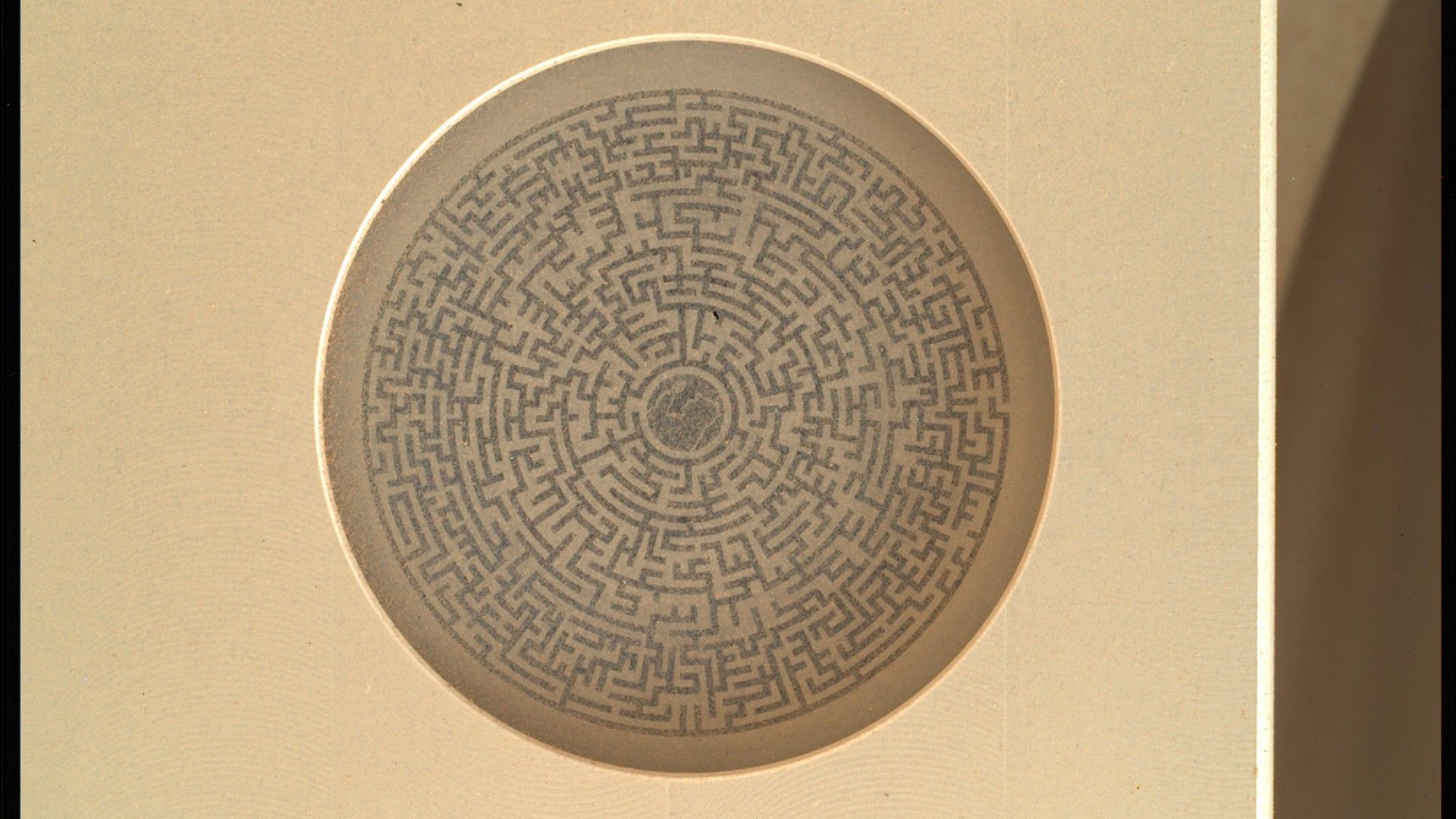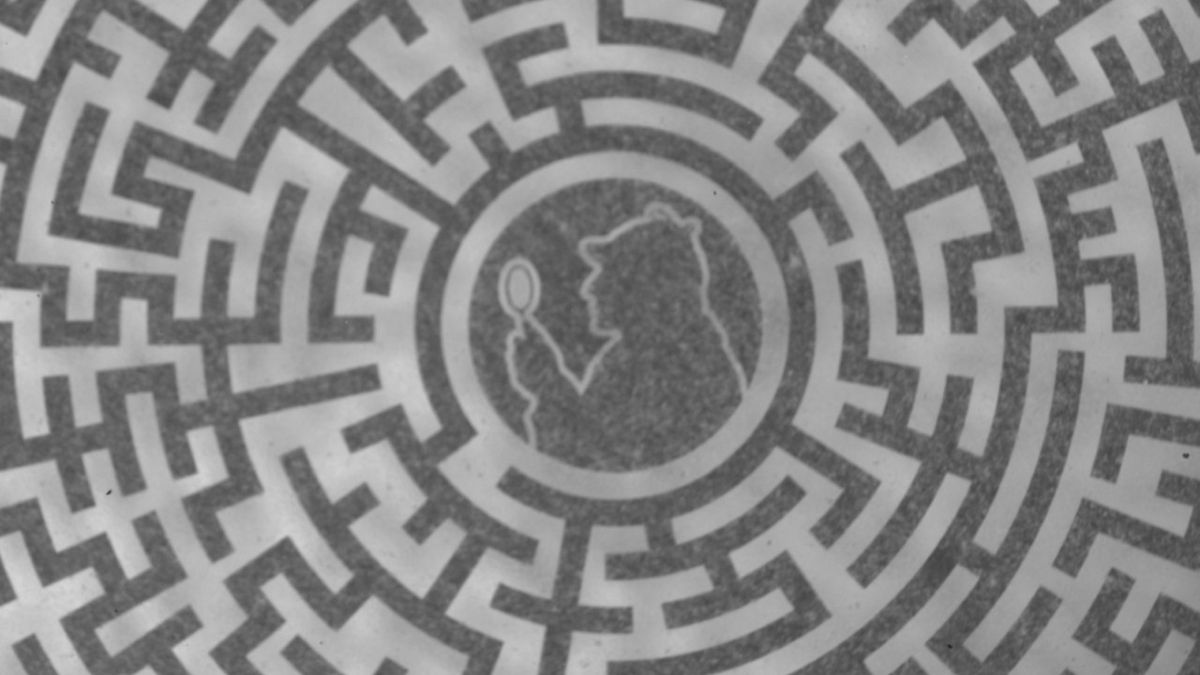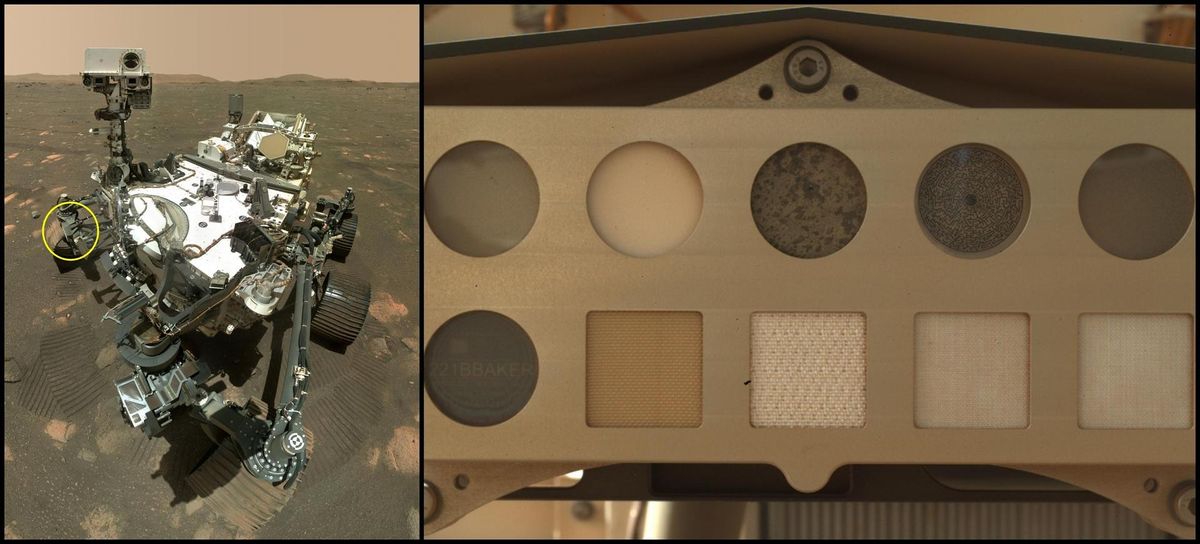Follow us on Google News (click on ☆)
This unusual pattern isn't just artistic whimsy. It's a calibration target for the SHERLOC instrument, designed to detect organic compounds on Mars. The maze helps precisely calibrate the rover's scientific tools.

The SHERLOC calibration target on NASA's Perseverance rover.
Credit: NASA/JPL-Caltech
SHERLOC uses spectroscopic techniques to analyze Martian rocks. Calibration is essential to ensure accurate measurements. The maze, with its chrome lines, helps adjust the laser focus and scanner mirror position.
The materials chosen for the calibration target have specific properties. Among them, a known Martian meteorite helps align the calibration with Mars' actual geology. The maze itself provides ideal spectral contrast for testing.
At the center of the maze, a portrait of Sherlock Holmes adds a humorous touch. This detail also serves to test the resolution of spectral maps generated by SHERLOC. The achieved precision can distinguish details as small as 50 microns (0.002 inches).
The lower part of the target tests materials. These samples, exposed to Martian conditions, provide valuable data for future crewed missions. Their analysis also helps refine SHERLOC's capabilities.

A close-up of the maze on the SHERLOC calibration target of the Perseverance rover.
Credit: NASA/JPL-Caltech
The SHERLOC instrument is accompanied by a color camera called WATSON. This duo, inspired by Conan Doyle's characters, illustrates scientists' creativity.
How does SHERLOC detect signs of ancient life on Mars?
SHERLOC uses Raman spectroscopy and luminescence to identify organic molecules and minerals. These techniques allow distinguishing specific compounds without direct contact with samples.
Raman spectroscopy relies on the interaction between laser light and molecular chemical bonds. Each molecule produces a unique signature, like a fingerprint, enabling its identification.
Luminescence, on the other hand, reveals the presence of certain minerals and organic compounds under ultraviolet light. These combined methods provide comprehensive analysis of Martian samples.

A 'selfie' of the Perseverance rover showing the location of the SHERLOC calibration target.
Credit: NASA/JPL-Caltech/MSSS
This non-destructive approach is ideal for preserving samples for their eventual return to Earth. It maximizes the chances of discovering traces of ancient life.
Why use a Martian meteorite for calibration?
The SaU008 meteorite included in the calibration target is a valuable reference sample. Its well-documented mineral composition allows precise calibration of SHERLOC.
This meteorite originates from Mars, making it an ideal standard for comparing on-site measurements. It helps adjust instruments to the Red Planet's specific conditions.
Using terrestrial materials could introduce biases in analyses. The Martian meteorite ensures more representative calibration of the environment being studied.